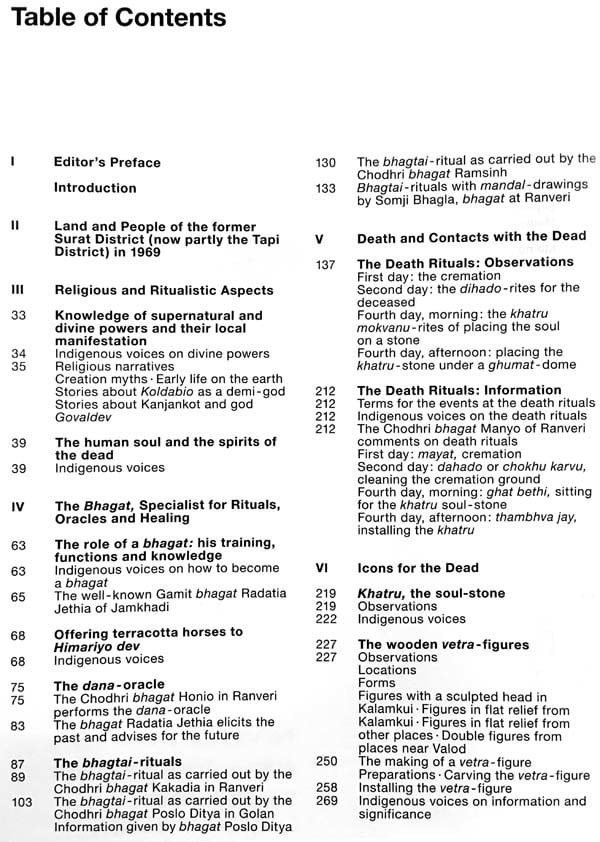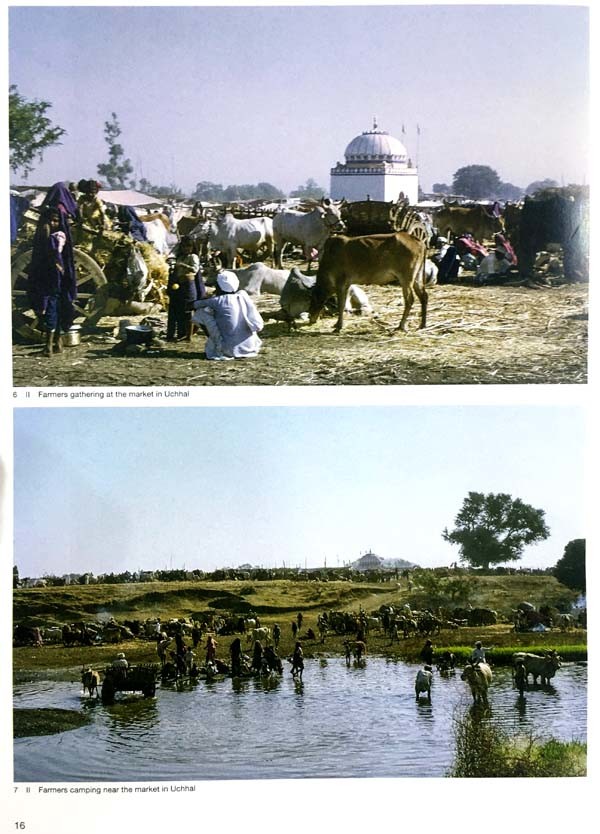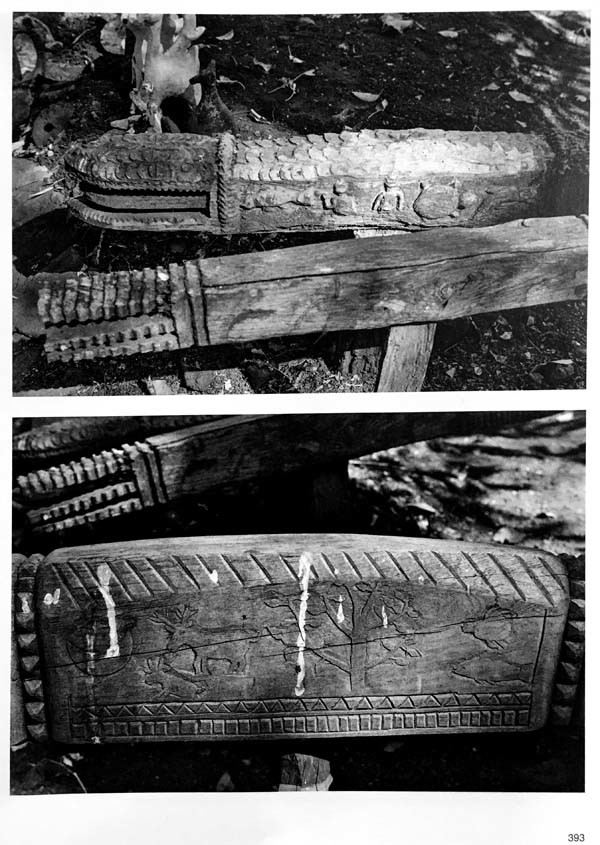Back of the Book Art for Tribal Rituals is the outcome of extensive fieldwork carried out by Eberhard Fischer and Haku Shah in South Gujarat in 1969. After an initial survey tour to locate village shrines and sacred pilgrimage sites, as well as specialists in rituals and crafts, the two art-anthropologists stayed in the field to observe as silent participants oracle and spirit-healing sessions, a death ceremony and the worship of local deities by the village communities. Fischer and Shah documented their experiences in unprecedentedly detailed photographic sequences, and as well, took precise notation of what they observed. In addition, they spoke to the specialists and carefully noted their comments, which are reproduced in this book as individual "indigenous voices".
This book of 528 pages and 823 photographs thus presents painted stones, large wooden stone slabs and figures - representations of bodies for otherwise unsettled souls of the dead - but also monumental wooden crocodiles, revered with piles of terracotta votive offerings. They also documented the production, installation and worship of these icons and ritual objects. An astonishing variety of expressive forms are displayed by these spectacular field photographs, taken half a century ago.
This publication is a tribute to the artistic and ritualistic accomplishments of Adivasi ritual leaders, healers and craftspeople of the past in a once remote area of Western India.
About the Authors Eberhard Fischer (born 1941) is a cultural anthropologist and art historian. He was Director of Museurn Rietberg Zürich, the Swiss mu seum of non-Western art, from 1972 until 1998. He received his Ph.D. with field studies documenting tribal mask-carvers in West Africa, before he first went to India in 1965 on a one-year teaching assignment at the National Institute of Design (N / D) in Ahmedabad. Since then, he has continuously enjoyed documenta tion work in India - from Kerala to Himachal Pradesh, from Gujarat to Odisha, always collaborating with distinguished Indian scholars including-besides Haku Shah-Jyotindra Jain, Dinanath Pathy, B.N. Goswamy. V.C. Ohri and Vijay Sharma, Balan Nambiar, c . Venu and Amit Dutta on joint publications as well as exhibi tions. As a specialist in African art with publications and films on outstanding sculptors of past and present. the Government of Ivory Coast awarded him Officier de l'ordre du mérite ivorien. He received Padma Shri in 2012.
Haku Shah (1934 - 2019) was a painter, cultural anthropologist, photographer, curator and a Gandhian. An author of international repute on folk and tribal art, he established a tribal museum in Ahmedabad at the Gujarat Vidyapith and gram, a crafts village near Udaipur in Rajasthan. He cooperated with Eberhard Fischer in 1965/66 at the National Institute of Design, in Saurashtra and again in 1968-70 in Surat District as well as in Kutch. He curated several exhibitions across the world including Unknown India, organized by art historian Stella Kramrisch at the Philadelphia Museum of Art in 1968. He also has films and several children's books to his credit and taught at various art and design schools, including UC Davis as a Regent Professor. He continued painting and had many successful shows in India and abroad. He received several awards including Padma Shri in 1989.
Introduction The readers are requested to keep in mind that this introduction was written by Haku Shah and me more than fifty years ago! Words like "informants", "tribals" etc. are not used anymore in most anthropological works but are generally replaced by "consultants", "Adivasi", etc. - but in context with the time of the original research it seems appropriate to not always change and modernize. Today, I personally would prefer to use the word Adivasi only for Indian ethnic groups with their own identities. In 1969 the terms "tribe" and also the adjective "tribal" were used in India exclusively for "Indian indigenous people", in normal speech as well as in academic writing. In some parts of India (including Gujarat) the word "tribal" still holds good as becomes clear in the unchanged name of Gujarat's most important agency for Adivasi interests and welfare, i.e. the "Tribal Research and Training Institute" of Gujarat Vidyapith in Ahmedabad.
The following Introduction is essentially the one published in our first publication, Mogra Dev, Tribal Crocodile Gods (Ahmedabad, 1971). Additions are marked by <...>, minor changes and omissions are not marked.
**Contents and Sample Pages**






















